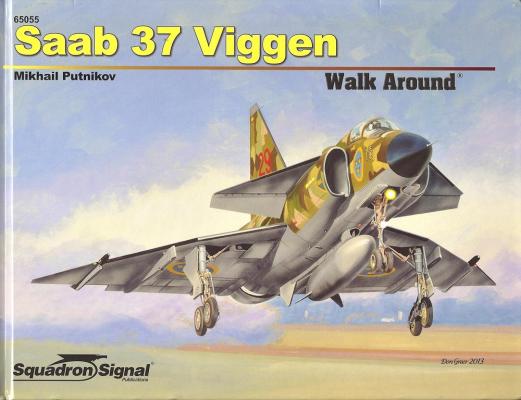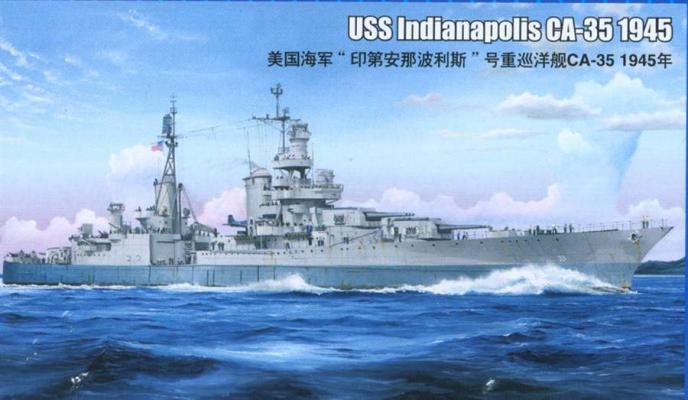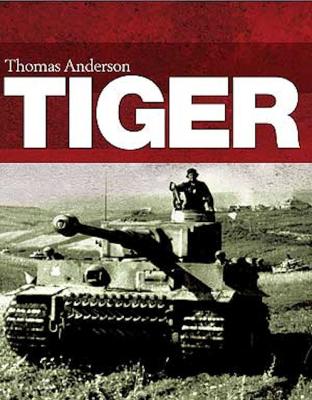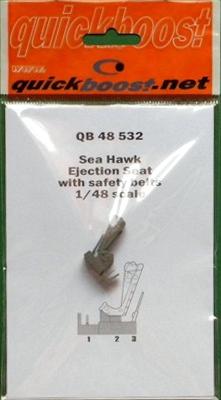The Saab 37 Viggen was designed to a Swedish air force requirement for an integrated weapon system with high performance, great versatility, and STOL capability. It was intended to replace the Saab 32 Lansen attack plane and the Saab 35 Draken fighter. To meet the requirements of a multi-roll aircraft, Saab came up with a radical configuration for the day. The design used a conventional low-set delta wing extending from mid-fuselage to tail pipe, with small clipped canard wings mounted forward of the main wings and above the intakes. This single-seat aircraft was powered by a single license-built version of the Pratt & Whitney JT8D engine equipped with a thrust-reverser. This innovative design package created a plane capable of Mach 2 at high altitude and Mach 1 at low altitude while maintaining short-field takeoff and landing capabilities. A total of 329 Viggens were built, and from 1970 to 1990 they were the backbone of Sweden's air defense.
Welcome to the IPMS/USA Reviews site!
Introduction: The primary organization of the IPMS/USA Review website is by IPMS/USA National Contest Class. Within each Class there are sub-menus by kits, decals, books, etc. The Miscellaneous Class is for items that are not class specific or that cross two or more classes.
IPMS/USA Members: We encourage you to submit reviews, both here and to the Journal. To volunteer for membership in the IPMS/USA "Reviewers Corps" and submit your own reviews, please read the Guidelines For Submitting Product Reviews.
Manufacturers, publishers, and other industry members: IPMS/USA is pleased to offer your company the opportunity for product reviews. All product reviews are performed by IPMS/USA members, and are posted in the publicly-accessible section of our website. With very few exceptions, we perform full build reviews of new kit releases, aftermarket products, and supplies. If you would care to provide product samples for review, please contact John Noack, IPMS/USA 1st VP.
To learn more about IPMS/USA, please see our About Us page.
History Brief
The USS Indianapolis is a ship potentially more famous for her loss than her life. On July 30, 1945, after delivering components for the first atomic bomb, the Indianapolis was hit by two torpedoes from the HIJMS I-58. Her loss was not discovered before August 2nd, after many of her survivors met grisly ends at the hands of the elements and constant shark attacks.
The Portland-class cruiser was launched in 1931 in the post-Washington Naval Treaty world. Envisioned as an improvement on the Northampton class, the Portlands featured a lower tripod forward mast and improved protection. The Indianapolis had a busy wartime career, earning ten battle stars for her service. She also saw extensive modification through her life, losing much of her upper works to the torch to make room for additional AA guns.
Osprey Publishing has a series known as “General Military” which has one-off books on different topics. This one is dedicated to the Tiger tank, although reading the book also provides a good insight on armored vehicle operations, as it includes descriptions of how the Tiger tanks worked together with Panzer III and half-track armored carrier personnel.
The book is divided into nine chapters. The first three chapters (Development, Organization, Mobility) basically evaluate the tank’s performance as a vehicle and how it was used in combination with other AFV. The following three chapters (Firepower, Armor, Combat), cover the combat experience of the tank, with specifics sections for combat in each front (Western, Eastern, and Africa), while the final three (Maintenance, Under Fire, Conclusions) cover different aspects from the recovery of those vehicles to how they performed in the last years of the war, facing upgraded allied armor vehicles.
Quickboost now offers a 1/48 scale three-piece resin ejection seat to replace the nine-part injection-molded seat found in the Trumpeter Sea Hawk kit, or the resin one found in the Classic Airframes kit. The multi-part ejection seat found on the sprues in Trumpeter’s kit builds into a nice, but somewhat unconvincing, replica of what you would see in the prototype. The resin seat in the Classic Airframes kit is much nicer, but requires the modeler to add PE belts to the seat, and the kit is now out of production. The Quickboost seat offers superior detail than what’s provided in either detail set, plus it includes nicely molded safety belts (the photos below show the level of delicate detail molded into the parts). The Quickboost seat also appears to be better proportioned. In the comparison photo below, the Quickboost seat (on the right) exhibits superior detail over that found in the Trumpeter kit’s seat (on the left).
Although the He-111 was designed supposedly as a civil transport prototype capable of carrying 10 passengers and mail, its main purpose was of a military nature. It first flew in 1935. Several modifications were made to improve performance. A major change was replacing the two 660-hp BMW engines with the 1,000 hp Daimler Benz DB 600A engines, which significantly improved performance. The He-111 cut its fighting teeth in the Spanish Civil War, serving with the Condor Legion where it was very successful. That success continued in the early days of World War II. Germany overran several countries with its Blitzkrieg tactics, staring the Ju-87 and the He-111. Its success faded with the onset of the Battle of Britain when the lightly armed He 111 encountered the fast Spitfires and Hurricanes. By the time Hitler lost this battle, he was already planning Operation Barbarossa, the invasion of the Soviet Union. The He 111 again found success on the Russian Front.















